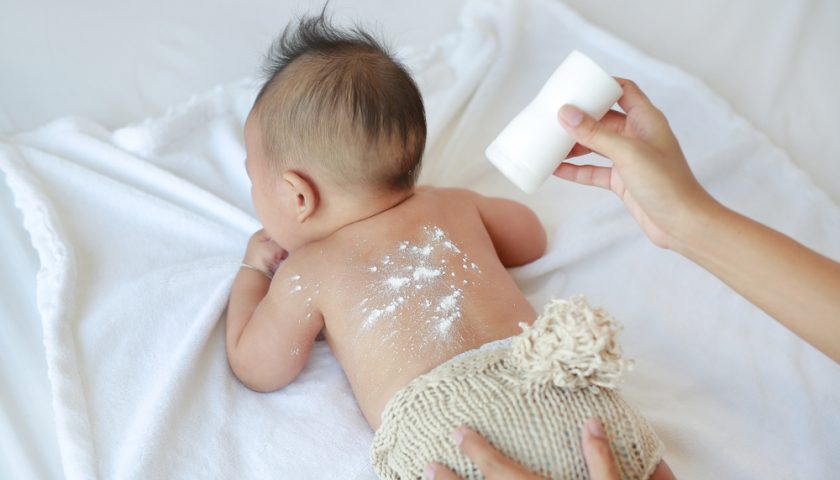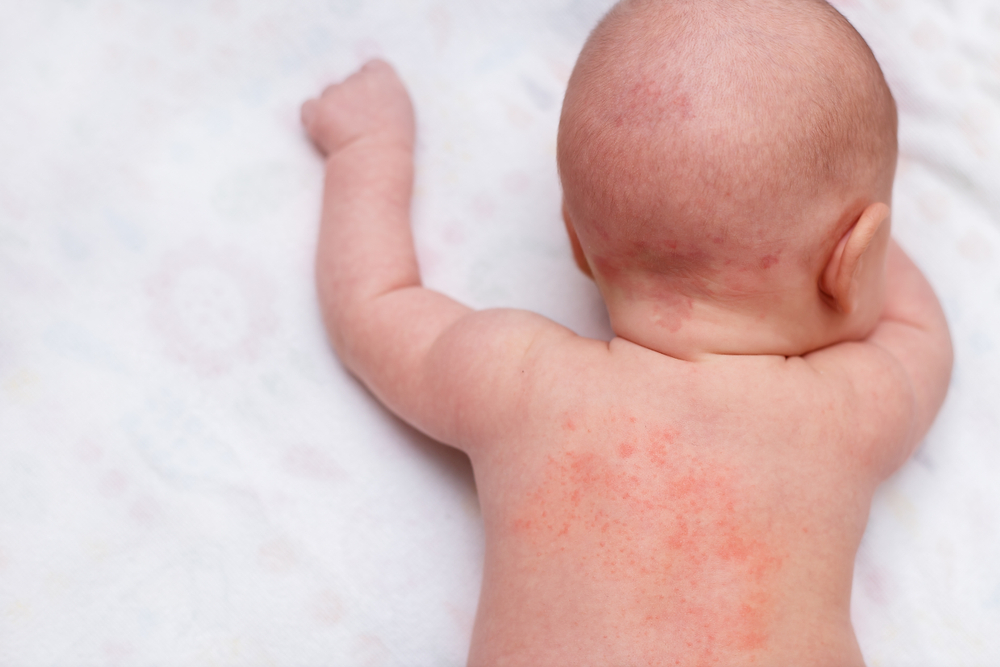If you see a heat rash baby, it can be itchy and uncomfortable, which can make him fussy. Everyone can get a heat rash, but babies are more likely to get one because their sweat glands aren’t as developed as those of older children and adults.
Most of the time, heat rash doesn’t need to be treated by a doctor and goes away on its own, with a little help from you.
So, if you notice a skin rash on the baby’s back, when you take off the blanket, it could be miliaria, which is a heat rash. Here are some things to do and watch out for.
Table of Contents
How Heat Rashes on Baby Back Occur?
Heat rash in babies is also called prickly heat or miliaria. It happens when babies sweat too much and clog their sweat glands, which traps sweat under the skin and causes red bumps or blisters. Most of the time, heat rash happens in the summer when it’s hot and humid. Clothes that are too tight or too warm can make it worse.
11 Home Remedies To Treat Heat Rash On Baby
There are many ways to treat heat rash at home. Some calm or cool your skin, while others reduce redness and itching and keep you from getting sick.
You shouldn’t scratch your rash. Scratching can make the problem worse and could even cause an infection.
Cool Showers And Baths
Most of the time, the heat rash on the baby gets better when the skin cools down. This can be helped by taking a bath in cool water. The pores can also be opened by washing the skin gently. This is very important because clogged pores can cause heat rash.
Make sure to dry your skin well after you take a bath. Skin that stays wet for too long can get irritated.
Air Conditioners And Fans
While your skin heals, you should avoid sweating too much and being in humid air. It’s important to have air flow so that your rash can dry out and stay cool. If you can, stay in a room with air conditioning or use a fan.
Clothes That Keep You Cool And Dry
As your skin heals itself, you should avoid wearing clothes that make you sweat more or irritate your skin. Light, loose-fitting clothes that wick away moisture can help your skin heal without making it worse.
Look for polyesters and other artificial fabrics that are made for fitness and sports. These will be great for getting rid of moisture.
Even though cotton doesn’t wick away moisture, it is a very breathable fabric. It could also be comfortable to wear.
Packs of ice or cold towels
A cold compress is a great way to calm skin that is red and itchy. Face cloths soaked in cold water or ice wrapped in a cloth can help relieve the pain and irritation of heat rash.
Oatmeal
A study indicates that oatmeal in dermatology has many uses. It can help reduce inflammation and itching. Because of this, it can be used to treat heat rash and other skin problems at home.
Put one or two cups of oatmeal in a bath that is about lukewarm, and then soak for 20 minutes. Make sure the water isn’t too hot, or you’ll hurt your skin even more.
You can also mix oatmeal and water to make a paste and put it on your skin. Mix one part oatmeal with one part water until a paste forms.
SandalWood
According to research,sandal wood album oil works as a botanical therapy for skin. It may be an anti-inflammatory and analgesic, which means it may help relieve pain. When heat rash hurts and burns, mixing some sandalwood powder with a little water and putting it on the rash can help.
When you mix 2 parts of sandalwood powder with 1 part of water, you get a thick paste. Test it on a small area of healthy skin before putting it on your rash. If you don’t have a reaction after an hour, you can safely put it on the rash.
Baking Soda
Sodium bicarbonate, or baking soda, can help soothe skin that is itchy and helps to relieve heat rash on the baby ‘s back. Also, most of us have it in our pantries. Because of this, it is a great home remedy for heat rash and other skin conditions that cause itching.
Add 3–5 tablespoons of baking soda to a lukewarm bath and soak for about 20 minutes.
Aloe Vera
There are countless health benefits of Aloe Vera. Aloe vera is a pain reliever and antiseptic that can cool the skin and keep it from getting sick. This can help ease pain and swelling. Aloe vera gel can be put directly on a heat rash to help relieve the pain.

Talcum Powder With No Scent
Talcum powder stops sweating by soaking up sweat. This keeps the pores from getting clogged.
Use talcum powder without a scent, since scents could irritate your skin. Put a little on your underarms, the backs of your knees, and the insides of your thighs, which tend to sweat. Coat the skin and let it sit as if it were a deodorant that stopped you from sweating.
Neem
Neem (margosa) is a plant that can help treat rashes on the skin. Some research has shown that it can kill bacteria and reduce inflammation.
Most people are unaware of neem leaves benefits and its uses. You can make a paste out of neem powder and water. You can put this paste on the rash, let it sit for a few minutes, and then wash it off. You can also put neem powder in a bath that is about lukewarm.
Epsom Salt
Epsom salt (magnesium sulfate) is said to be good for your health in a number of ways. Word of mouth says that a lukewarm bath with a cup or two of Epsom salt can help with itching.
Make sure a child doesn’t swallow any water when you give them an Epsom salt bath. When taken by mouth, Epsom salt makes you go to the bathroom. Too much of it can make you have diarrhea.
Things You Should Consider
Most of the time, heat rash is not dangerous. But it can be a sign that a baby is at risk of getting too hot. Overheating can cause a number of serious health problems, so it is important to listen to the warning and move the baby to a cooler place. The rash can go away quickly if the baby is kept cool and comfortable.
See a doctor if the rash doesn’t go away on its own within a few days, if the baby seems to be in a lot of pain, or if the rash starts to spread.
